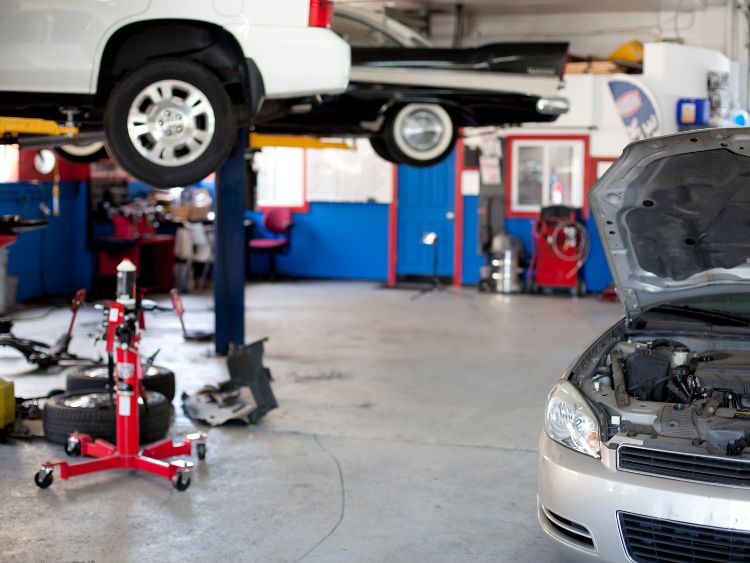Ever had that gut-wrenching feeling when your car breaks down in the middle of nowhere? We’ve all been there. Whether it’s a flat tire, a dead battery, or a more complex issue, car troubles can throw a wrench in your day. But here’s the good news: with some advanced auto repair knowledge, you can tackle many of these problems head-on. This comprehensive guide will dive deep into advanced auto repair techniques, helping you keep your vehicle running smoothly and save money in the long run. Ready to become a car repair guru? Let’s get started!
Understanding Advanced Auto Repair
What Is Advanced Auto Repair?
Advanced auto repair goes beyond the basics of changing a tire or checking your oil. It involves diagnosing and fixing more complex issues like engine problems, electrical faults, and transmission issues. This level of repair often requires specialized tools, a good understanding of car mechanics, and sometimes, a bit of patience.
Why Is It Important?
Knowing advanced auto repair can save you a ton of money. Mechanics charge a premium for their expertise, and while their services are sometimes necessary, many repairs can be done at home with the right knowledge. Additionally, understanding your vehicle’s inner workings can help you identify problems early, preventing minor issues from becoming major headaches.
Essential Tools for Advanced Auto Repair
Before diving into advanced repairs, you need the right tools. Here’s a list of must-haves:
- OBD-II Scanner: This handy device lets you read error codes from your car’s computer, helping you diagnose issues quickly.
- Torque Wrench: Ensures that bolts are tightened to the correct specifications.
- Multimeter: Essential for diagnosing electrical problems.
- Jack and Jack Stands: For safely lifting your car off the ground.
- Comprehensive Tool Set: Including screwdrivers, wrenches, pliers, and sockets.
- Service Manual: A detailed guide specific to your vehicle’s make and model.
Common Advanced Auto Repair Techniques
Engine Diagnostics and Repair
The engine is the heart of your car, and keeping it in top condition is crucial. Here are some advanced tips:
- Check Engine Light: If your check engine light comes on, use an OBD-II scanner to read the error code. This will give you a starting point for diagnosing the issue.
- Spark Plugs and Wires: Worn-out spark plugs can cause misfires and poor performance. Replace them every 30,000 miles or as specified in your service manual.
- Timing Belt: A broken timing belt can lead to severe engine damage. Replace it according to your vehicle’s maintenance schedule, usually around 60,000 to 100,000 miles.
Transmission Maintenance
Your car’s transmission is responsible for shifting gears and transferring power from the engine to the wheels. Here’s how to keep it running smoothly:
- Fluid Check: Transmission fluid is essential for lubrication and cooling. Check the fluid level regularly and replace it every 30,000 to 60,000 miles.
- Shifting Issues: If you notice rough or delayed shifting, it might be time to replace the transmission fluid or filter. In some cases, a full transmission rebuild might be necessary.
Electrical System Troubleshooting
Modern cars are packed with electronics, and electrical issues can be tricky to diagnose. Here are some tips:
- Battery Health: A weak or dead battery can cause all sorts of problems. Check the battery voltage with a multimeter and replace it if it’s below 12.4 volts.
- Fuses and Relays: Blown fuses or faulty relays can cause electrical components to fail. Check the fuse box and replace any blown fuses.
- Wiring Harness: Inspect the wiring harness for any signs of wear or damage. Repair or replace damaged wires to prevent electrical shorts.
Advanced Auto Repair Tips for DIY Enthusiasts
Suspension and Steering
A smooth ride depends on a well-maintained suspension and steering system. Here’s how to keep them in top shape:
- Shock Absorbers and Struts: Replace worn-out shocks and struts to improve ride quality and handling.
- Alignment: Misaligned wheels can cause uneven tire wear and poor handling. Get your wheels aligned every 10,000 miles or after any major suspension work.
- Power Steering Fluid: Low power steering fluid can cause difficulty in steering. Check the fluid level regularly and top it off as needed.
Brake System
Brakes are one of the most critical safety components of your car. Keep them in top condition with these tips:
- Brake Pads and Rotors: Replace brake pads when they’re worn down to 3mm or less. Check the rotors for any signs of warping or damage.
- Brake Fluid: Brake fluid absorbs moisture over time, reducing its effectiveness. Flush and replace the brake fluid every 2 years or 30,000 miles.
- Brake Lines: Inspect brake lines for any signs of wear or leaks. Replace damaged lines immediately.
FAQs
What Are the Signs of a Failing Transmission?
Some common signs of transmission issues include rough or delayed shifting, unusual noises when shifting, and leaking transmission fluid. If you notice any of these symptoms, it’s best to get your transmission checked by a professional.
How Often Should I Replace My Car’s Timing Belt?
Timing belt replacement intervals vary by vehicle, but they typically range from 60,000 to 100,000 miles. Always refer to your vehicle’s service manual for specific recommendations.
Can I Perform Advanced Auto Repair Without Professional Help?
While many advanced auto repairs can be done at home, it’s important to have the right tools and knowledge. Always consult your vehicle’s service manual and consider seeking professional help for complex or safety-critical repairs.
What Is an OBD-II Scanner, and How Do I Use It?
An OBD-II scanner is a diagnostic tool that reads error codes from your car’s computer. To use it, simply plug it into the OBD-II port (usually located under the dashboard), turn on the ignition, and follow the scanner’s instructions to read the codes.
How Can I Improve My Car’s Fuel Efficiency?
Maintaining your car regularly can significantly improve fuel efficiency. Keep the tires properly inflated, replace air filters regularly, and ensure the engine is running smoothly by replacing spark plugs and other worn components.
Conclusion
Mastering advanced auto repair techniques can save you a considerable amount of money and give you a sense of accomplishment. By understanding your car’s inner workings and staying on top of maintenance, you’ll keep your vehicle running smoothly and extend its lifespan. So, the next time your car throws a tantrum, you’ll be ready to tackle the problem head-on. Happy wrenching!






